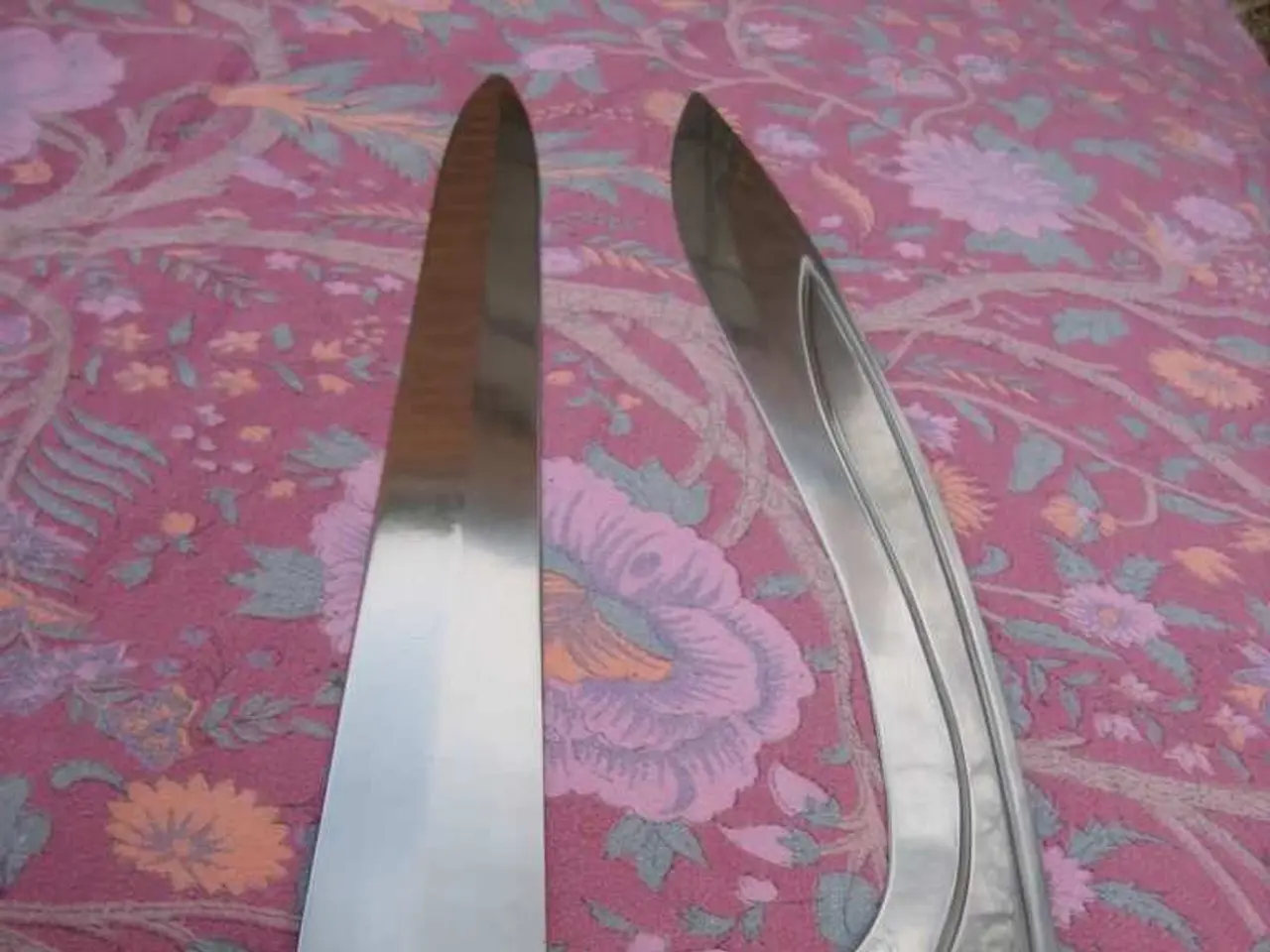Brutal Practices from the Past: Revealing 10 Excruciating Torture Techniques of Medieval Era
In the midst of the medieval period, a time marked by superstition and fear, various methods were devised to inflict pain and extract confessions. Though these devices may seem like relics of a bygone era, it is essential to understand their existence and the horrors they represented.
Contrary to popular belief, the Iron Maiden, a notorious symbol of medieval brutality, did not exist during the medieval period. The earliest reference to it was in 1802, long after the medieval era had passed. The Iron Maiden was an upright iron coffin with spikes lining the interior, designed to enclose a victim and cause slow, painful death by piercing vital organs. Two spikes were positioned to pierce the eyes, adding to the agony.
Another device, the heretic's fork, was used during the Spanish Inquisition. Unlike its name suggests, it was not intended to kill but to torment the victim, pushing them to the brink of madness. The fork was worn around the neck and could not be removed without causing severe pain.
The brazen bull, a legend from ancient Greece, proposed a form of execution where the condemned was placed inside a hollow metal bull. A fire was lit beneath, gradually heating the metal and roasting the victim alive.
The rack, introduced to England in the 15th century, was a device used to inflict pain and extract confessions. Victims were laid on a rectangular frame, and their wrists and ankles were tied. A mechanical crank was used to stretch the body, causing agony and potentially dislocating joints, snapping ligaments, and tearing limbs.
The breaking wheel, also known as the Catherine wheel, was a medieval torture device used for criminals. The wheel could be turned over a fire or pushed down a rocky hillside, with some versions including spikes that impaled the back. The wheel was dropped onto the victim's limbs, tying them to the spokes, beating them, or impaling them with spikes.
The Judas cradle, a pyramid-shaped device associated with the medieval period, particularly the Spanish Inquisition, was designed to cause severe pain. Victims were lowered onto the spiky top, causing the tip to rip through the pelvis.
The thumbscrew, a medieval torture device, was used to crush a person's thumbs or other digits, often involving pointed spikes or nails.
The heretic's fork, the tongue tearer, and the pear of anguish were all devices designed to inflict pain and cause internal damage. The heretic's fork was worn around the neck, the tongue tearer resembled gardening shears and was used to rip out a person's tongue over a fire, and the pear of anguish was a handheld metal contraption in the shape of a pear, inserted into the victim's mouth or other orifices to inflict pain and cause internal damage.
Lastly, the rat torture was a medieval method of prolonged and painful death. A hungry rat was forced to eat its way through a victim's body, causing unimaginable suffering.
These devices serve as a grim reminder of the darker aspects of human history, a testament to the lengths people will go to inflict pain and control others. Today, we strive to learn from these dark chapters, promoting understanding, empathy, and the rule of law.







